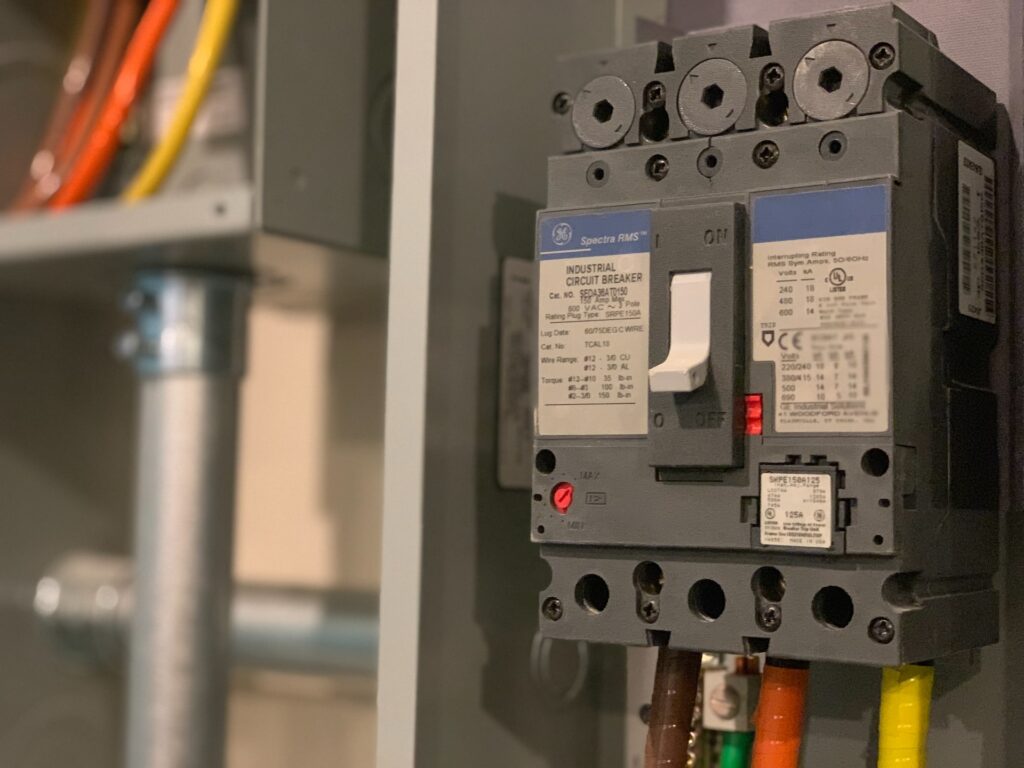
Common California Electrical Code Violations
Every state has a set of electrical codes that must be adhered to when developing any type of structure or building. For residential homes, electrical codes are meant to keep the home as safe as it can be. With these codes in place, the potential for injury or fire from electrical issues decreases.
Whenever problems in electrical systems are identified, the proper fixes can be made. These fixes are then written as electrical codes that everyone must follow. In California, electrical codes are constantly being changed and improved, which can lead to several electrical code violations being found in a home.
Even if your home is currently up to code, it might not be in a year. This article offers a detailed overview of some of the more common electrical code violations that take place in California homes.

What is the California Electrical Code?
The California Electrical Code was developed by the California Building Standards Commission. This commission makes updates to the code on a regular basis. Copies of the California Electrical Code are available at the City Clerk and Building Official’s office. If ever there are any conflicts between the state electrical code and any city or federal codes, the most restrictive set of codes will prevail.
Why is the California Electrical Code Important?
The purpose of the electrical code is to make sure that all electrical systems in homes and other buildings are installed correctly to mitigate the risk of a fire or other type of damage. Without this code in place, unsafe wiring practices may occur. As a California business owner or resident, following the state electrical code ensures that you and anyone else in the building is safe.
Residential electrical codes focus on all types of electrical wiring and systems that can be found in a home. For instance, these codes tell developers and residents where electrical systems can be installed and how they should be accessed. The areas where electrical services, panels, and equipment are installed need to maintain a set amount of space to ensure access for maintenance or repair work.
Exposure to the elements is also taken into account in the state’s electrical codes. All electrical devices and equipment must be kept in a safe enclosure. GFCI circuits are required in locations where being exposed to grounded surfaces could lead to an electric shock. AFCI circuits are necessary in specific areas of the home.

Adoption of California Electrical Code
While there are some aspects of the California Electrical Code that are different than the national code, it’s largely based on the National Electrical Code. Like all California building standards, the electrical code was first implemented in 1978, which is when the state ordered that building standards be unified.
The electrical code changes every three years but isn’t always up-to-date with nationwide standards. For instance, the 2019 California Electrical Code was largely based on the 2017 National Electrical Code. Even though the code was adopted in 2019, it wasn’t officially enforced until the beginning of 2020.
Amendments to Electrical Code
Recently, amendments have been made to the electrical code that are expected to go into effect in January 2023. These changes and updates center around everything from permit issuance to unused facilities.
Added New Section Regarding Permit Issuance
This amendment states that permits can only be issued to:
- Single-family dwelling owners
- Electrical contractors who have a California electrical contractor’s license
- Governmental agencies
- Plant electricians who are allowed to perform plant maintenance work
- Specialty or general contractors who have a state license
Added New Section Regarding Dangerous Electrical Equipment
These changes state that any of the following equipment needs to be repaired, removed, or replaced because it’s dangerous.
- Live front panels are used or maintained
- The working area around a service panel isn’t sufficient for proper repair or maintenance work
- Service panels have a high number of overloads
- Fuses have higher ratings than permitted in the California Electrical Code
- Electrical conductors are in an unapproved raceway
- Drop cords of more than six feet are used for connecting electrical appliances
- Electrical equipment isn’t correctly grounded
- Electrical equipment is unsafe in regards to the intended use
- Electrical equipment is cracked or broken
Added New Section Regarding Authority to Condemn Installations
In the event that an electrical installation violates the California Electrical Codes, an order to replace or remove the installation will be given by the building official. This order will be in writing and will be mailed to the individual who’s responsible for making the necessary corrections.
The order will include a timeline during which a fix can be made. In most cases, the building official has the authority to physically disconnect the electrical installation. If a violation is still in place after the timeline provided by the building official, the installation can be physically disconnected. Service to the wiring system could also be disconnected.
Added New Section Regarding Unused Facilities
When electrical service has been officially disconnected for at least 90 continuous days in a commercial or industrial building, the service can’t be reconnected until the building official performs an inspection and approves of the service reconnect. A permit is needed for the inspection.
As for existing residential buildings, service that has been fully disconnected for at least 90 continuous days comes with the same stipulations. The building official will be tasked with ordering an inspection, which you’ll likely need to pay a fee for.
What are Some Common Electrical Code Violations in California?
There are three highly common electrical code violations that you should do your best to avoid.

All Outlets Near Water Must Be on a GFCI Circuit
The first code violation involves outlets near water being on an incorrect circuit. All of these outlets should be on GFCI circuits. A GFCI circuit is a type of electrical safety device that’s able to shut power off to the circuit when a high amount of current is flowing to the outlet. Even low current levels can lead to serious injuries, which is something that GFCI circuits aim to prevent.
It’s common for too much current to flow through a circuit when a short circuit occurs, which is possible when water comes into contact with the circuit. The latest update to the electrical code states that all outlets near water should be outfitted with a GFCI or should be positioned on a circuit that’s able to be interrupted by the GFCI. Switching to GFCi circuits is a simple process that should only take a few minutes of your time. These upgrades may be necessary if you currently live in a home that’s more than 20 years old.
Not Having Tamper-resistant Receptacles
Temper-resistant receptacles are able to save the life of yourself or a small child. This type of receptacle is designed specifically to close and block electrical leads, which ensures that no one is able to place something in the receptacle and electrocute themselves.
These receptacles are required in every location in accordance with the National Electrical Code. If your home isn’t outfitted with tamper-resistant receptacles at the moment, you may need to make upgrades. If you don’t want to replace all outlets at the same time, focus on the ones that your children could easily reach.
Overlamping
Overlamping is a serious issue that occurs when a lighting fixture is equipped with a bulb that has a higher wattage rating than the fixture that it has been placed in. All fixtures have a maximum wattage that they can accommodate, which is based on the connections and wires that are housed inside the fixture.
When a bulb draws more than the max current allowed, the wires inside the fixture might overheat. Eventually, the shielding could strip away entirely, which means that the fixture would be a fire hazard. Overlamping isn’t an issue for lighting fixtures that use LED bulbs. If, on the other hand, you use older bulbs, overlamping could be a problem for you and your home.
If your lighting fixture only support low-watt bulbs, switching over to LED bulbs that have a higher wattage is completely safe. Along with helping you save money on your monthly energy bill, high-watt LED bulbs aren’t dangerous. You could also choose to replace the lighting fixture altogether if you’d like to use different types of bulbs.
The California Electrical Code is updated every three years, which is why you’ll want to periodically check the updates to make sure that your home or building still meets the state code. If violations are identified in your residence, fines could be levied. In most cases, however, you’ll only need to make a change that will get your home up to code.

Jason Somers, President & Founder of Crest Real Estate
With over 15 years of professional experience in the Los Angeles luxury real estate market, Jason Somers has the background, judgement and track record to provide an unparalleled level of real estate services. His widespread knowledge helps clients identify and acquire income producing properties and value-ad development opportunities.
Learn more about Jason Somers or contact us.



